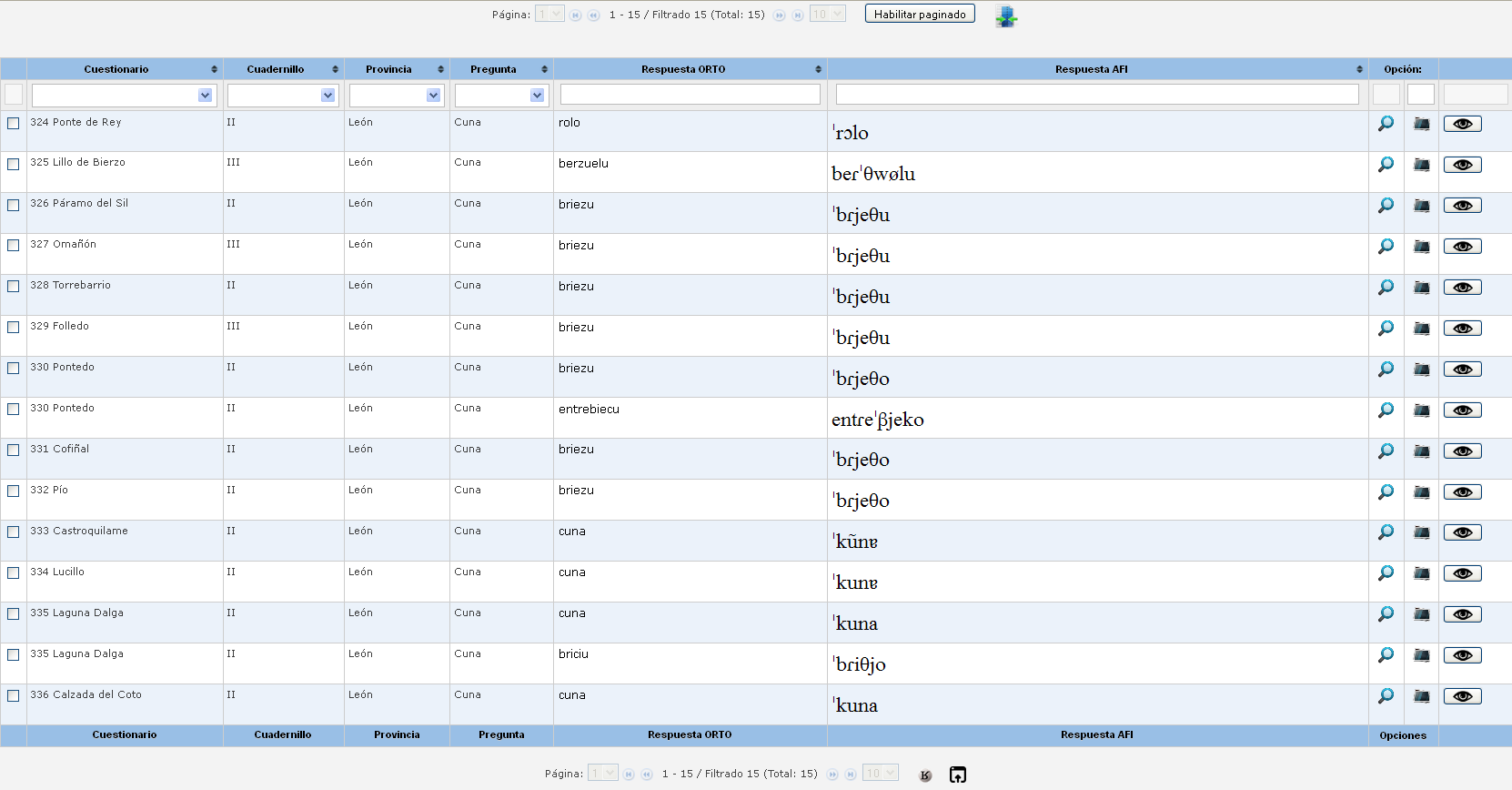This is where the contents of ALPI questionnaires, which have been entered in this database, can be queried in a number of ways. Because of the nature of the program, we advise using as a browser either Mozilla Firefox or Google Chrome with a Flash plug-in in order to see images properly. This application works with other browsers but they may have difficulty displaying content.
Since the work of entering data has not been completed for all survey points, we have chosen to present here the responses for ten lexical questions collected at each of the points in the survey network, as a sample of what the whole dataset will look like in the end. These ten questions, chosen for their richness and interest, belong to various semantic fields covered in Notebook II of the questionnaire:
| 458 Green peas (Guisantes) | 600a Hip (Cadera) | |
| 493 Ladybug (Mariquita) | 704 Cradle (Cuna) | |
| 496 Lizard (Lagartija) | 751 To carry on one's back (Llevar a cuestas) | |
| 502 Waqtail (Aguzanieves) | 753a To somersault (Dar volteretas) | |
| 520a Wild Boar (Jabalí) | 825 Yeast (Levadura) |
LThe replies to these questions correspond to the 527 survey points, whose locations are shown on mapa I of the ALPI. By clicking on it you can zoom in and move around until you find the area that interests you. Once found, look for the points you would like to query. You can query by survey point, or by province or by a combination of both. The zones which the ALPI fieldworkers established are also a query option. The bracketed numbers show the numbers of the questionnaires which are included in each zone:
| · Galicia (100-151), | · Andalusia and Murcia (500-570), | |
| · Portugal (200-292), | · Navarra and Aragón (600-639), | |
| · Asturias, León and Extremadura (300-377), | · Andorra, Roussillon, Catalonia, Valencia and the Balearic Islands (700-803) | |
| · Old and New Castile, with Albacete (400-489), |
The Query will return responses in phonetic transcription and in the orthography normally used in each language area, along with their semantic classification and any other clarifying annotation that the fieldworkers may have added. As indicated above, the query can be limited to a specific locality or to several, to one province or to several, to one zone in particular or to more than one at a time. The results of a query can also be mapped using a system, still in the initial stages of development, which allows you to display them using either symbols to represent the points of interest or polygons covering the corresponding area.
A help document, which can be downloaded here, aids in working with the Query interface.

Query form with responses for "briezu"

Results table for the word 'cuna'

Results table and mapping options with the responses for "briezu"

Results for the search for "briezu"

Results from the search for "cun-" and "ber-"



